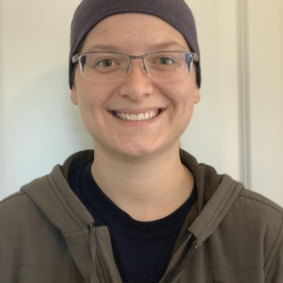Eight students will be presenting the summer work at the Ocean Sciences Meeting in March 2022!
Kennedy Quillen, Coastal Carolina University
Class Year:
2021Mentor:
Ryan Woodland Ph.D.Project Title:
Benthic-Pelagic Coupling by Neomysis americana in Two Chesapeake Bay TributariesAbstract:
Neomysis americana is an abundant, omnivorous mysid in Chesapeake Bay and its tributaries that serves as an important forage taxon for many adult and juvenile fisheries species. Neomysis americana displays diel vertical migration, aggregating near the bottom during the day and expanding their distribution to include near-surface waters at night; however, it is unclear what effect summertime hypoxia has on their ability to access deep water habitats. The objective of this study was to quantify and compare the relative contributions of benthic and pelagic trophic pathways to the assimilated diet of N. americana between two Chesapeake Bay tributaries (the Patuxent and Choptank rivers) that typically differ in summertime dissolved oxygen conditions. Specimens of N. americana and putative trophic endmembers were collected at 3 locations in each river during the summer months of 2018 and 2019 for stable isotope analysis (δ13C, δ15N). Mixing models were used to estimate the contribution of benthic and pelagic prey sources and isotope niche area (proxy for trophic niche) for N. americana in each tributary. The contribution of benthic pathways to diet and the niche area of mysids were compared to local water quality to determine if hypoxia has an identifiable effect on benthic-pelagic coupling or realized niche area. Results showed no significant difference in the isotopic niche areas of N. americana or trophic endmembers between tributaries, though pelagic connectivity was greater in the Patuxent River. Further, no relationship was found between bottom water dissolved oxygen or river flow and the isotope-based trophic metrics. These findings suggest a greater isotopic variability of mysid diet sources in the Patuxent River and a difference in the structural food web components supporting mysids between rivers.
Location:
VirtualREU Update
Graduate Research Fellow studying fish and coral reef ecology at University of South Florida St. PetersburgPublications:
Quillen, K.*, N. Santos, J.M. Testa, R.J. Woodland. 2022. Coastal hypoxia reduces trophic resource coupling and alters niche characteristics of an ecologically dominant omnivore. Food Webs 33: e00252, https://doi.org/10.1016/j.fooweb.2022.e00252.
Presentations:
Quillen, K.*, N. Santos, J.M. Testa, and R. Woodland. 2022. Coastal hypoxia reduces trophic resource coupling and alters niche characteristics of an ecologically dominant omnivore . AFS Tidewater Meeting, Outer Banks, NC.



